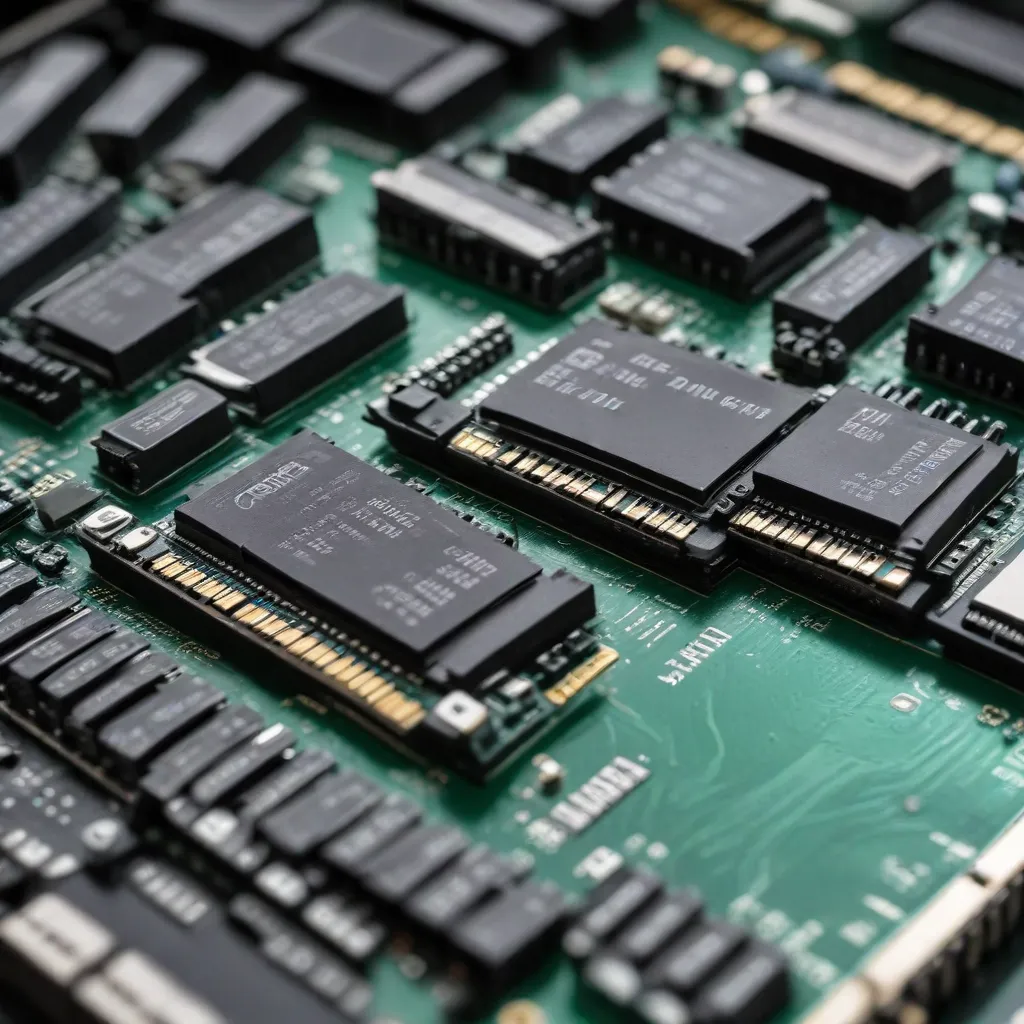
Computer Hardware
RAM (Random Access Memory)
One of the most critical components in any computer system is the Random Access Memory (RAM). RAM serves as the short-term memory that allows your computer to quickly access and process data. Without sufficient and functioning RAM, your system can experience a range of issues, from sluggish performance to complete system crashes.
Computer System Crashes
System crashes can be one of the most frustrating and disruptive problems a computer user can face. When your system suddenly freezes, restarts unexpectedly, or displays a Blue Screen of Death (BSOD), it can bring your productivity to a screeching halt. While there are many potential causes for system crashes, faulty RAM modules are a common culprit.
Troubleshooting Computer Issues
Identifying System Crashes
System crashes can manifest in various ways, such as:
- Frequent freezes or hangs
- Unexpected reboots or shutdowns
- Blue Screens of Death (BSODs) with error messages
- Slow or unresponsive applications
- Corrupted or missing data
If you’re experiencing any of these symptoms, it’s essential to investigate the underlying cause to resolve the issue.
Troubleshooting Techniques
When troubleshooting system crashes, a methodical approach is crucial. Begin by checking for any obvious hardware issues, such as loose connections or overheating components. If those initial checks don’t reveal the problem, it’s time to delve deeper into potential RAM-related issues.
RAM Replacement
Faulty RAM Modules
Faulty RAM modules can be a significant contributor to system crashes. Symptoms of faulty RAM can include:
- Frequent BSOD errors related to memory management or pool corruption
- Inconsistent system behavior, where the computer may work fine one moment and crash the next
- Inability to boot the system or complete the POST (Power-On Self-Test) process
If you suspect your RAM is the culprit, it’s essential to test the memory modules individually to identify the problematic one.
RAM Compatibility and Installation
When replacing faulty RAM modules, it’s crucial to ensure that the new modules are compatible with your computer’s specifications. Check the manufacturer’s recommendations for the supported RAM types, speeds, and capacities. Improper RAM installation can also lead to system instability, so be sure to follow the instructions carefully when inserting the new modules.
Computer Maintenance and Repair
Preventive Maintenance
To minimize the risk of system crashes due to faulty RAM, it’s essential to perform regular computer maintenance. This includes:
- Keeping your system’s BIOS or UEFI firmware up-to-date
- Ensuring adequate cooling for your components
- Regularly running memory diagnostics to detect any emerging issues
By proactively maintaining your computer, you can often catch RAM problems before they escalate into full-blown system crashes.
Upgrading Computer Components
As technology advances, it may be necessary to upgrade your computer’s RAM to keep up with the demands of modern software and applications. When considering a RAM upgrade, be mindful of compatibility, performance requirements, and the overall condition of your system.
Data Recovery and Backup
Data Backup Strategies
System crashes can lead to data loss, so it’s crucial to have a reliable backup strategy in place. Regularly backup your important files, documents, and settings to an external storage device or a cloud-based service. This will ensure that your data is safe and easily recoverable in the event of a system failure.
Data Recovery Processes
If a system crash results in data loss, there are various data recovery techniques that can be employed. From using specialized software to seeking professional data recovery services, it’s essential to act quickly to maximize the chances of recovering your valuable information.
Operating System Management
OS Diagnostics
When troubleshooting system crashes, it’s often helpful to run comprehensive diagnostics on your operating system. This can include checking for any corrupted system files, verifying disk integrity, and identifying any potential conflicts or incompatibilities.
OS Configuration and Optimization
Ensuring your operating system is properly configured and optimized can also play a role in preventing system crashes. This may involve adjusting power settings, disabling unnecessary startup programs, or tweaking system settings to improve stability and performance.
Networking and Connectivity
Network Troubleshooting
In some cases, system crashes can be related to network connectivity issues. Faulty network drivers or misconfigured network settings can contribute to system instability. Troubleshooting network-related problems may be necessary to resolve the underlying issue.
Connectivity Issues
Alongside network-related problems, issues with other connected devices, such as external storage or peripherals, can also lead to system crashes. Ensuring that all your system’s connections are secure and functioning correctly can help eliminate potential sources of instability.
IT Support and Services
Remote Troubleshooting
For those who may not feel comfortable or capable of handling complex computer repair tasks, remote troubleshooting services can be a valuable resource. IT professionals can often diagnose and resolve issues, including RAM-related problems, without the need for an in-person visit.
On-site Repair Services
In more severe cases, where the problem cannot be resolved remotely, on-site repair services may be necessary. Experienced technicians can physically inspect your system, identify the faulty components, and perform the necessary repairs or replacements, including replacing defective RAM modules.
Remember, regular maintenance, proactive problem-solving, and seeking professional assistance when needed can go a long way in keeping your computer running smoothly and preventing frustrating system crashes. By following these best practices, you can ensure your system remains stable and your data is well-protected.












